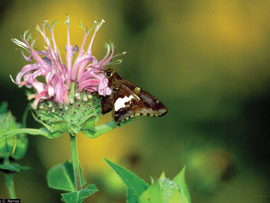A Paradox of Nature: Designing rain gardens to be dry
 Despite the proven environmental benefits of rain gardens, many people are reluctant to use them because they can be unattractive, states Kevin Burrell In the opening sentence in an article published in the October 2008 issue of Stormwater Magazine.
Despite the proven environmental benefits of rain gardens, many people are reluctant to use them because they can be unattractive, states Kevin Burrell In the opening sentence in an article published in the October 2008 issue of Stormwater Magazine.
“But a close examination of the relationships between hydrology and vegetation in rain gardens suggests a solution for improving their looks and their function,” continues Burrell. “Rather than think of rain gardens primarily as wet environments, we should design them as dry environments that experience only brief wet periods. This shift in thinking increases opportunities for ornamental planting without sacrificing environmental performance.”
Design Guidelines
After reviewing the pros and cons of the rain garden, Burrell presents a comprehensive anatomy of a Dry Rain Garden encompassing:
- Required Design Data
- First Flush
- Ponding Depth and Drain Time
- Topsoil
- Grass Root Systems
- Planting Design
- Construction
- Establishment and Maintenance
By rethinking rain gardens as primarily dry environments, Burrell concludes that a stronger and more resilient system of relationships can be established.
Acknowledgement:
Before STORMWATER, The Journal for Surface Water Quality Professionals, there was no single publication written specifically for the professional involved with surface water quality issues, protection, projects, and programs.
Posted October 2008

